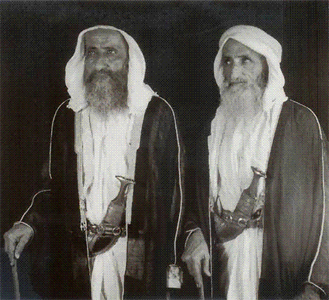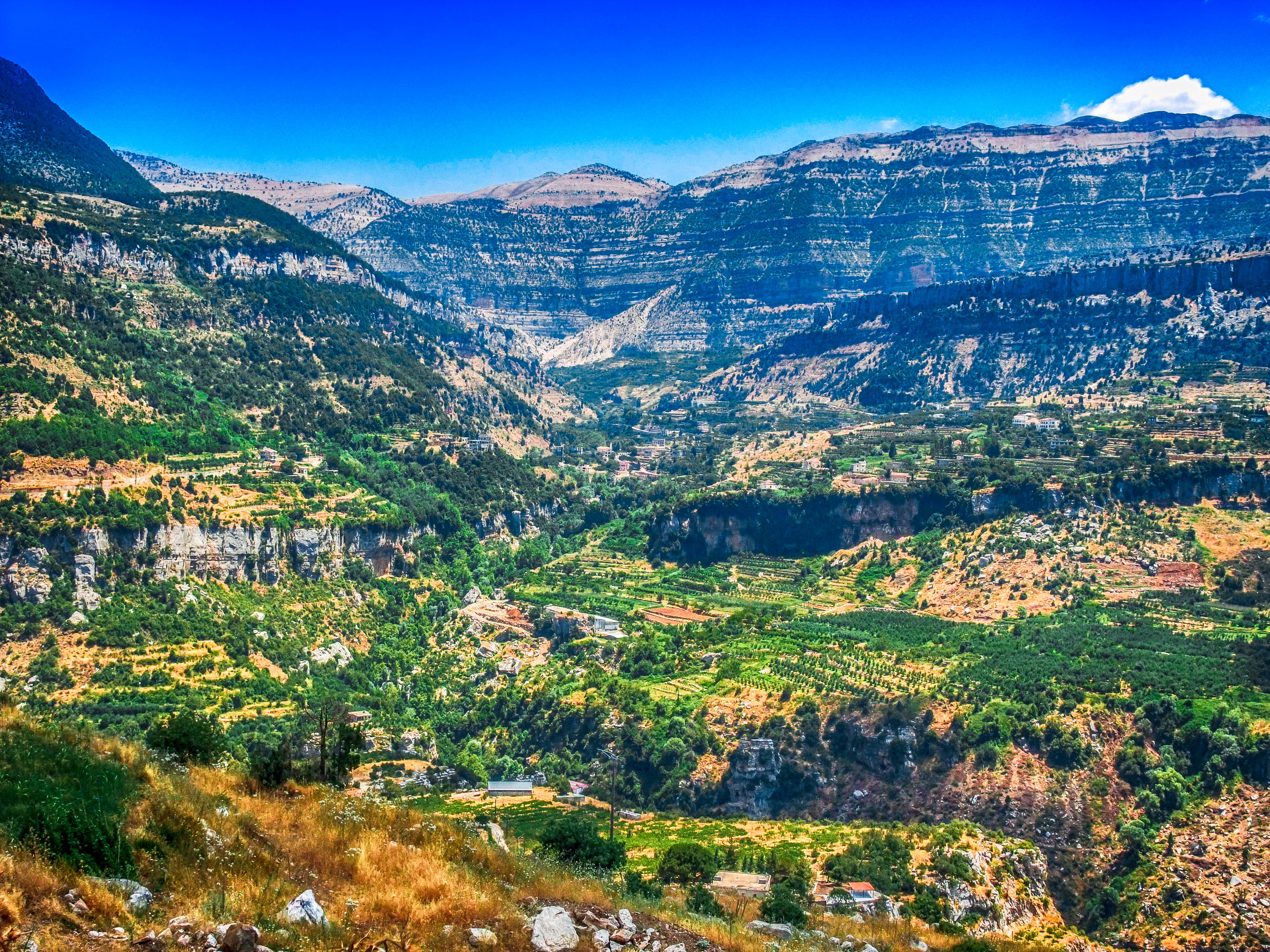|
Khazen Family
Khazen (also El-Khazen, Al-Khazen, Khazin or De Khazen, ar, آل الخازن, is a prominent Levantine family and clan based in Keserwan District, Lebanon, Damascus, Syria, Nablus, Palestine, as well as other districts around the Levant, predominantly in the Galilee in Israel. The family were very influential within the Maronite Church. Several members have played leading roles in politics for many generations. King Louis XIV elevated the family to the French nobility and referred to them as "princes of the Maronites" in many letters. Pope Clement X made them Counts Palatine. Most of the Lebanese Khazen branch is Maronite, while some other branches are Greek Orthodox and Muslim but are not related to the Mount-Lebanese, which were endowed with these honors. History The Khazen Cheikhs can trace back their lineage to the 9th century to the Ghassanids, when they were mainly located between Houran, Damascus, Baalbeck, and Nablus. They started buying and acquiring lands in Mount Leba ... [...More Info...] [...Related Items...] OR: [Wikipedia] [Google] [Baidu] |
Cheikhs
Sheikh (pronounced or ; ar, شيخ ' , mostly pronounced , plural ' )—also transliterated sheekh, sheyikh, shaykh, shayk, shekh, shaik and Shaikh, shak—is an honorific title in the Arabic language. It commonly designates a chief of a tribe or a royal family member in Arabian countries, in some countries it is also given to those of great knowledge in religious affairs as a surname by a prestige religious leader from a chain of Sufi scholars. It is also commonly used to refer to a Muslim religious scholar. It is also used as an honorary title by people claiming to be descended from Hasan ibn Ali and Husayn ibn Ali both patrilineal and matrilineal who are grandsons of the Islamic prophet Muhammad. The term is literally translated to " Elder" (is also translated to "Lord/Master" in a monarchical context). The word 'sheikh' is mentioned in the 23rd verse of Surah Al-Qasas in the Quran. Etymology and meaning The word in Arabic stems from a triliteral root connected with a ... [...More Info...] [...Related Items...] OR: [Wikipedia] [Google] [Baidu] |
Joseph Dergham El Khazen
Joseph V Dergham El Khazen (or Yusuf Dargham al-Khazin, ar, يوسف الخامس درغام الخازن, la, Ioseph Dargam Alchasen, born in Ghosta, Lebanon - died on May 13, 1742), was the 60th Maronite Patriarch of Antioch from 1733 to his death in 1742. Life Joseph Dergham El Khazen was a member of the Khazen family and he was born in the village of Ghosta, in the Keserwan District, Lebanon. He married, and after the death of his wife he became priest. He was consecrated titular bishop of Ghosta in 1728 by the hands of patriarch Jacob Awad. At the death of Jacob Awad, the electoral synod couldn't decide between two pretenders, so finally on February 25, 1733 he was elected for acclamation because of his influential family. The confirmation of his election by Pope Clement XII arrived on December 18, 1733, with the brief Cum nos a vinculo ierre Dib, op. cit., col. 79./ref> and El Khazen received the pallium. The need for reform of the Maronite Church, the ecclesiastical ... [...More Info...] [...Related Items...] OR: [Wikipedia] [Google] [Baidu] |
Aleppo
)), is an adjective which means "white-colored mixed with black". , motto = , image_map = , mapsize = , map_caption = , image_map1 = , mapsize1 = , map_caption1 = , pushpin_map = Syria#Mediterranean east#Asia#Syria Aleppo , pushpin_label_position = left , pushpin_relief = yes , pushpin_mapsize = , pushpin_map_caption = Location of Aleppo in Syria , coordinates = , subdivision_type = Country , subdivision_name = , subdivision_type1 = Governorate , subdivision_type2 = District , subdivision_type3 = Subdistrict , subdivision_name1 = Aleppo Governorate , subdivision_name2 = Mount Simeon (Jabal Semaan) , subdivision_name3 = Mount Simeon ( ... [...More Info...] [...Related Items...] OR: [Wikipedia] [Google] [Baidu] |
Archbishop
In Christian denominations, an archbishop is a bishop of higher rank or office. In most cases, such as the Catholic Church, there are many archbishops who either have jurisdiction over an ecclesiastical province in addition to their own archdiocese ( with some exceptions), or are otherwise granted a titular archbishopric. In others, such as the Lutheran Church of Sweden and the Church of England, the title is borne by the leader of the denomination. Etymology The word archbishop () comes via the Latin ''archiepiscopus.'' This in turn comes from the Greek , which has as components the etymons -, meaning 'chief', , 'over', and , 'seer'. Early history The earliest appearance of neither the title nor the role can be traced. The title of "metropolitan" was apparently well known by the 4th century, when there are references in the canons of the First Council of Nicæa of 325 and Council of Antioch of 341, though the term seems to be used generally for all higher ranks of bishop ... [...More Info...] [...Related Items...] OR: [Wikipedia] [Google] [Baidu] |
Papal Orders Of Chivalry
The orders, decorations, and medals of the Holy See include titles, chivalric orders, distinctions and medals honoured by the Holy See, with the Pope as the fount of honour, for deeds and merits of their recipients to the benefit of the Holy See, the Catholic Church, or their respective communities, societies, nations and the world at large. Some of these honours are defunct or currently dormant, while some are still actively conferred. Chivalric orders ''Papal orders of knighthood'' or ''Pontifical orders of knighthood'' are orders of knighthood bestowed in the name of the Pope of the Catholic Church by his authority as head of the Holy See and sovereign of the Vatican City State. Historically, membership in these orders was either conferred by Papal bulls not signed by the Pope or by apostolic letters signed by the Pope himself. Since the reforms of these orders in the beginning of the 20th century, the diplomas have been signed by the Cardinal Secretary of State. ... [...More Info...] [...Related Items...] OR: [Wikipedia] [Google] [Baidu] |
Chehab Family
The Shihab dynasty (alternatively spelled Chehab; ar, الشهابيون, ALA-LC: ''al-Shihābiyūn'') was an Arab family whose members served as the paramount tax farmers and local chiefs of Mount Lebanon from the early 18th to mid-19th century, during Ottoman Empire, Ottoman rule. Their reign began in 1697 after the death of the last Ma'n dynasty, Ma'nid chief. The family centralized control over Mount Lebanon, destroying the feudal power of the mostly Druze lords and cultivating the Maronite clergy as an alternative power base of the emirate. The Shihab family allied with Muhammad Ali of Egypt, Muhammad Ali of Egypt Eyalet, Egypt during his occupation of Ottoman Syria, Syria, but was deposed in 1840 when the Egyptians were driven out by an Ottoman-European alliance, leading soon after to the dissolution of the Shihab emirate. Despite losing territorial control, the family remains influential in modern Lebanon, with some members having reached high political office. History O ... [...More Info...] [...Related Items...] OR: [Wikipedia] [Google] [Baidu] |
Cheikh
Sheikh (pronounced or ; ar, شيخ ' , mostly pronounced , plural ' )—also transliterated sheekh, sheyikh, shaykh, shayk, shekh, shaik and Shaikh, shak—is an honorific title in the Arabic language. It commonly designates a chief of a tribe or a royal family member in Arabian countries, in some countries it is also given to those of great knowledge in religious affairs as a surname by a prestige religious leader from a chain of Sufi scholars. It is also commonly used to refer to a Muslim religious scholar. It is also used as an honorary title by people claiming to be descended from Hasan ibn Ali and Husayn ibn Ali both patrilineal and matrilineal who are grandsons of the Islamic prophet Muhammad. The term is literally translated to " Elder" (is also translated to "Lord/Master" in a monarchical context). The word 'sheikh' is mentioned in the 23rd verse of Surah Al-Qasas in the Quran. Etymology and meaning The word in Arabic stems from a triliteral root connected with a ... [...More Info...] [...Related Items...] OR: [Wikipedia] [Google] [Baidu] |
Fakhr-al-Din II
Fakhr al-Din ibn Qurqumaz Ma'n ( ar, فَخْر ٱلدِّين بِن قُرْقُمَاز مَعْن, Fakhr al-Dīn ibn Qurqumaz Maʿn; – March or April 1635), commonly known as Fakhr al-Din II or Fakhreddine II ( ar, فخر الدين الثاني, Fakhr al-Dīn al-Thānī), was the paramount Druze emir of Mount Lebanon from the Ma'n dynasty, an Ottoman governor of Sidon-Beirut and Safed, and the strongman over much of the Levant from the 1620s to 1633. For uniting modern Lebanon's constituent parts and communities, especially the Druze and the Maronites, under a single authority for the first time in history, he is generally regarded as the country's founder. Although he ruled in the name of the Ottomans, he acted with considerable autonomy and developed close ties with European powers in defiance of the Ottoman imperial government. Fakhr al-Din succeeded his father as the emir of the Chouf mountains in 1591. He was appointed over the sanjaks (districts) of Sidon-Bei ... [...More Info...] [...Related Items...] OR: [Wikipedia] [Google] [Baidu] |
Shi'a
Shīʿa Islam or Shīʿīsm is the second-largest Islamic schools and branches, branch of Islam. It holds that the Prophets and messengers in Islam, Islamic prophet Muhammad in Islam, Muhammad designated Ali, ʿAlī ibn Abī Ṭālib as his Succession to Muhammad, successor (''khalīfa'') and the Imamah (Shia doctrine), Imam (spiritual and political leader) after him, most notably at the event of Ghadir Khumm, but was prevented from succeeding Muhammad as the leader of the Muslims as a result of the choice made by some of Companions of the Prophet, Muhammad's other companions (''ṣaḥāba'') at Saqifah. This view primarily contrasts with that of Sunni Islam, Sunnī Islam, whose adherents believe that Muhammad did not appoint a successor before Death of Muhammad, his death and consider Abu Bakr, Abū Bakr, who was appointed caliph by a group of senior Muslims at Saqifah, to be the first Rashidun, rightful (''rāshidūn'') caliph after Muhammad. Adherents of Shīʿa Islam are c ... [...More Info...] [...Related Items...] OR: [Wikipedia] [Google] [Baidu] |
Kisrawan
The Kisrawan or Keserwan is the region in Mount Lebanon straddling the Mediterranean coast north of the Lebanese capital Beirut and south of the Ibrahim River. It is administered by the eponymous Keserwan District, part of the Keserwan-Jbeil Governorate. In the 12th–13th centuries it was a borderland between the Crusader states along the coast and the Muslim governments in Damascus. Its inhabitants at that time were Twelver Shia Muslims, Alawites, Druze and Maronite Christians. While the Kisrawanis acted independent of any outside authority, they often cooperated with the Crusader lords of Tripoli and Byblos. Soon after the Sunni Muslim Mamluks conquered the Crusader realms, they launched a series of punitive expeditions in 1292–1305 against the mountaineers of the Kisrawan. The assaults caused wide scale destruction and displacement, with Maronites from northern Mount Lebanon gradually migrating to depopulated villages in the region. The Mamluks established Turkmen settl ... [...More Info...] [...Related Items...] OR: [Wikipedia] [Google] [Baidu] |
Byblos District
Byblos District ( ar, قضاء جبيل; transliteration: ''Qadaa' Jbeil''), also called the Jbeil District (''Jbeil'' is Lebanese Arabic for "Byblos"; standard Arabic ''Jubail''), is a district (''qadaa'') of the Keserwan-Jbeil Governorate of Lebanon. It is located to the northeast of Lebanon's capital Beirut. The capital is Byblos. The rivers of al-Madfoun and Nahr Ibrahim form the district's natural northern and southern borders respectively, with the Mediterranean Sea bordering it from the west and Mount Lebanon from the east, separating it from the adjacent district of Baalbek in the Beqaa Valley. Demographics The district's population is predominantly Maronite Catholic, followed by a Shia Muslim minority community. The largest towns of the district are predominantly inhabited by Maronites; they are Byblos, Qartaba, Aqoura and Amsheet. Most Shia Muslims live in the valley of the Ibrahim River, particularly in the villages of Almat, Ras Osta, Hjoula, Bichtlida, Lassa, and ... [...More Info...] [...Related Items...] OR: [Wikipedia] [Google] [Baidu] |









